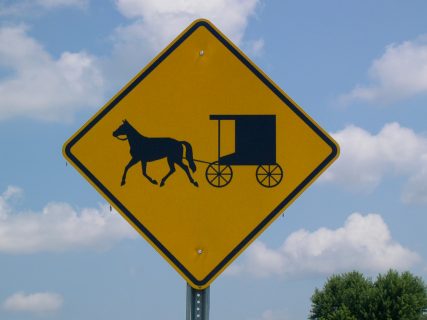I grew up in Pennsylvania Dutch country; so, I don’t find Amish or Mennonites exotic. They helped shape the local culture. Unfortunately, most of us ate like the Amish without working like them. Egg noodles, shoe fly pie, chicken-corn soup, and picked-everything isn’t healthy when you’re not laboring on the farm.
Even though the Amish now have communities now in 31 states, many people find them enigmatic. Recent “reality shows” on the Amish are making things worse by showing lives that have little to do with reality.
Research on Religion’s Tony Gill interviews Elizabethtown College’s Donald Kraybill about his research on the Amish. Kraybill answers questions we “English” often have about the Amish and dispels some common myths including that the Amish never use electricity or engines and that Amish youth go wild as part of “rumspringa.” Beyond the myths, Amish life is an interesting lens to reconsider other faiths.
Corner of Church & State blog is partnering with Research on Religion by bringing you one of its podcasts. Research on Religion is a weekly conversation designed to facilitate a jargon-free discussion of major topics within the social scientific study of religion. They are a unique way to not only learn about religion but also about those who study religion. Each podcast is hosted by Tony Gill, a professor of political science at the University of Washington and a Distinguished Senior Fellow at Baylor’s Institute for Studies of Religion (the podcast is supported by Baylor’s ISR). This week’s podcast features University of Sydney’s David Smith on the intersection of religion and foreign affairs.






